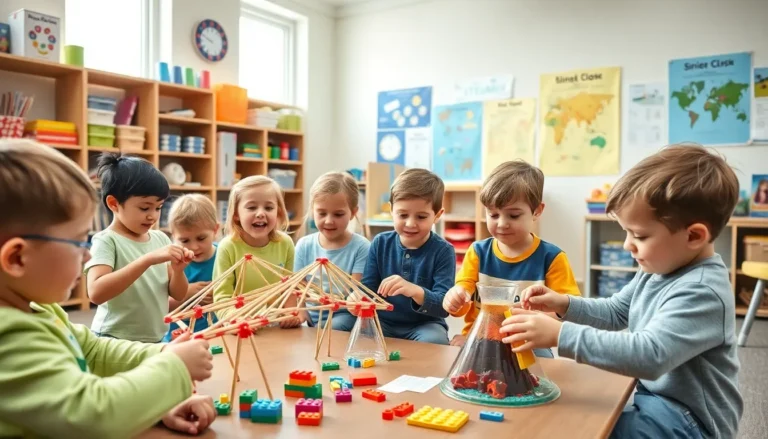Table of Contents
ToggleNavigating the world of child welfare can feel a bit like trying to assemble a piece of IKEA furniture without the instructions. Confusing, right? But fear not. When it comes to understanding the difference between adoption and fostering, this guide breaks it down in a way that’s both enlightening and entertaining. Are you ready to discover how these two pathways can change lives, and how they’re as different as cats and dogs? Let’s immerse.
Understanding Adoption

Adoption is a profound, life-altering process. It establishes a permanent relationship between a child and their adoptive parents, transforming the child’s legal status to that of a biological family member. This transition isn’t just about paperwork: it’s about creating a family bond that lasts a lifetime.
Types Of Adoption
There are several types of adoption to consider. Domestic adoption involves adopting children from the same country, while international adoption means bringing children from other countries into your family. Then, there’s open adoption, where birth parents maintain a relationship with the child, allowing for ongoing communication and sometimes physical visits. Each option has its unique set of emotional and legal nuances that prospective parents should weigh carefully.
Legal Process Of Adoption
The legal aspect of adoption can seem daunting. It involves a court process that includes background checks, home studies, and sometimes a waiting period. You’ll need to file paperwork and may even have interviews with social workers to ensure that the prospective parents are ready for this huge commitment. The ultimate goal is to confirm that the child’s best interests are being met.
Benefits Of Adoption
So, what’s in it for the child and the parents? Adoption provides stability, security, and a sense of belonging. Adoptive parents can build a family that fulfills their dreams of parenthood, while children gain a support system that nurtures their growth. Plus, who doesn’t want to be the happy ending in a child’s story?
Understanding Fostering
Fostering might sound similar, but it’s a completely different ball game. Instead of creating a permanent family bond, fostering often serves as a temporary solution aimed at helping children whose birth families are unable to care for them, due to various circumstances.
Types Of Foster Care
Foster care comes in various forms, including emergency placements for children in crisis and respite care, where a child might stay for a short time with a different family to give primary caregivers a break. There might also be specialized foster care, catering to children with unique needs or challenges, requiring specific experiences from foster parents.
Legal Process Of Fostering
The legal process for fostering is generally less intense than adoption but still involves significant oversight. Prospective foster parents have to undergo licensing, including background checks and home studies to ensure a safe environment for the child. Regular visits from social workers are also common, to monitor the child’s well-being and ensure that the foster home remains nurturing.
Benefits Of Fostering
Fostering is not just about providing shelter: it’s about creating a temporary safe haven for children in need. Foster care allows individuals to make a direct impact on a child’s life, offering them love and support during a tumultuous time. Plus, it can lead to personal growth for both child and caregiver, what a rewarding experience.
Key Differences Between Adoption And Fostering
Understanding the nuances between adoption and fostering is crucial for anyone considering either path. Let’s break it down.
Emotional Impact
Adoption often brings about a profound emotional bond that can last a lifetime, as children become an integral part of their adoptive families. On the flip side, fostering is typically temporary, so while strong attachments can develop, both children and foster parents may face heartache when it’s time to say goodbye.
Duration And Commitment
Adoption is a long-term commitment, aiming for a permanent arrangement. Fostering can range from a few days to several months and might even lead to adoption in some cases. The shifting nature of fostering requires more flexibility and short-term planning compared to the steadfast nature of adoption.
Legal Rights And Responsibilities
In adoption, parents receive full legal rights to raise their child without further oversight, allowing them total say in the child’s upbringing. Foster parents, but, maintain a cooperative relationship with social services, and parents usually retain some legal responsibilities throughout the fostering period. This means that while foster parents play a crucial role, they may have less authority in certain decisions.
Choosing The Right Path
When deciding between adoption and fostering, it’s essential to consider your unique situation and family goals.
Factors To Consider When Choosing
Consider your emotional preparedness, financial situation, and the kind of family structure you envision. How permanent do you want the arrangement to be? Are you ready for the possibility of saying goodbye to a foster child? Asking these questions can lead you toward a fulfilling choice.
Resources And Support Available
Seek out resources and support networks regardless of which path you choose. Many organizations provide guidance, counseling, and community connections for both adoptive and foster families, never underestimate the power of a supportive network.






